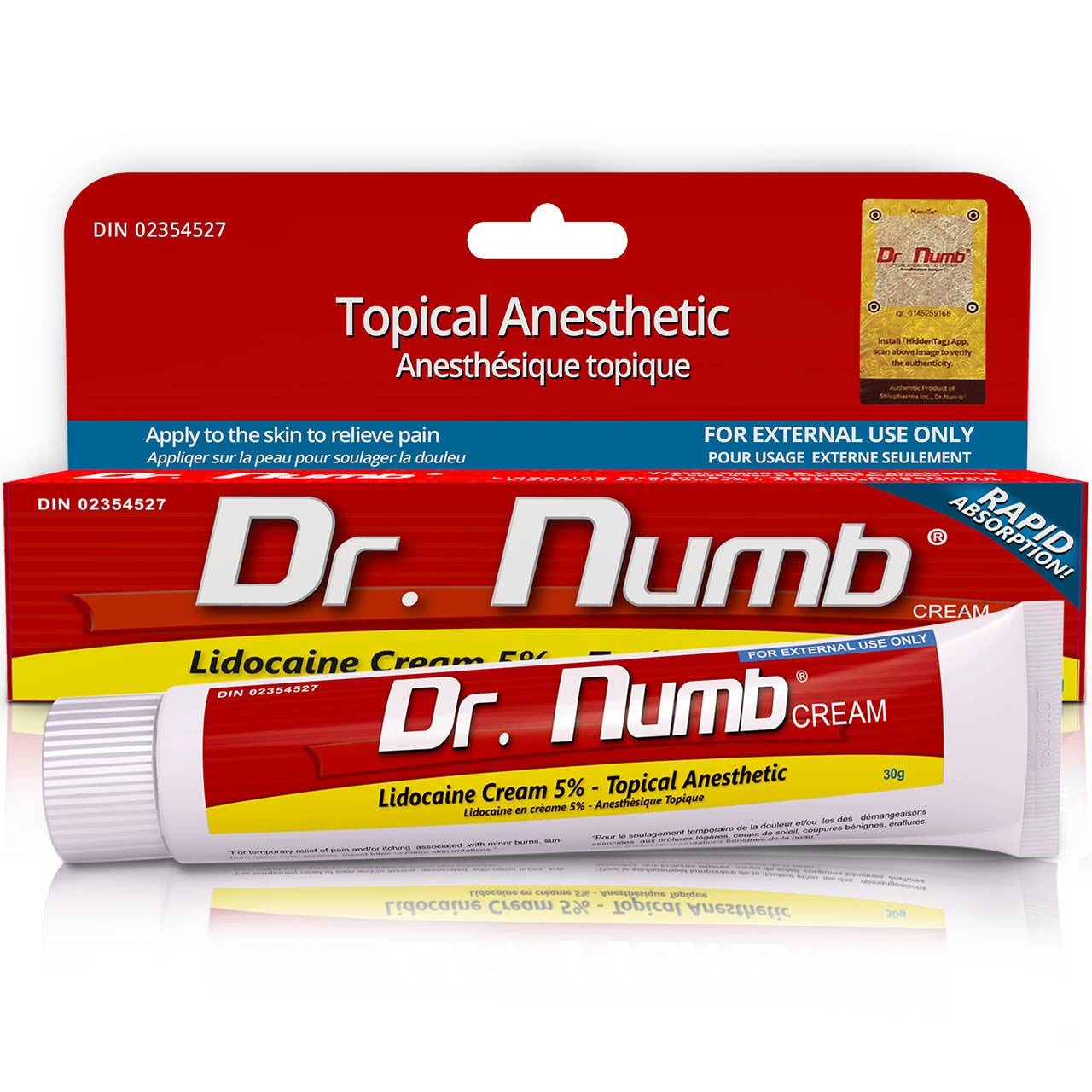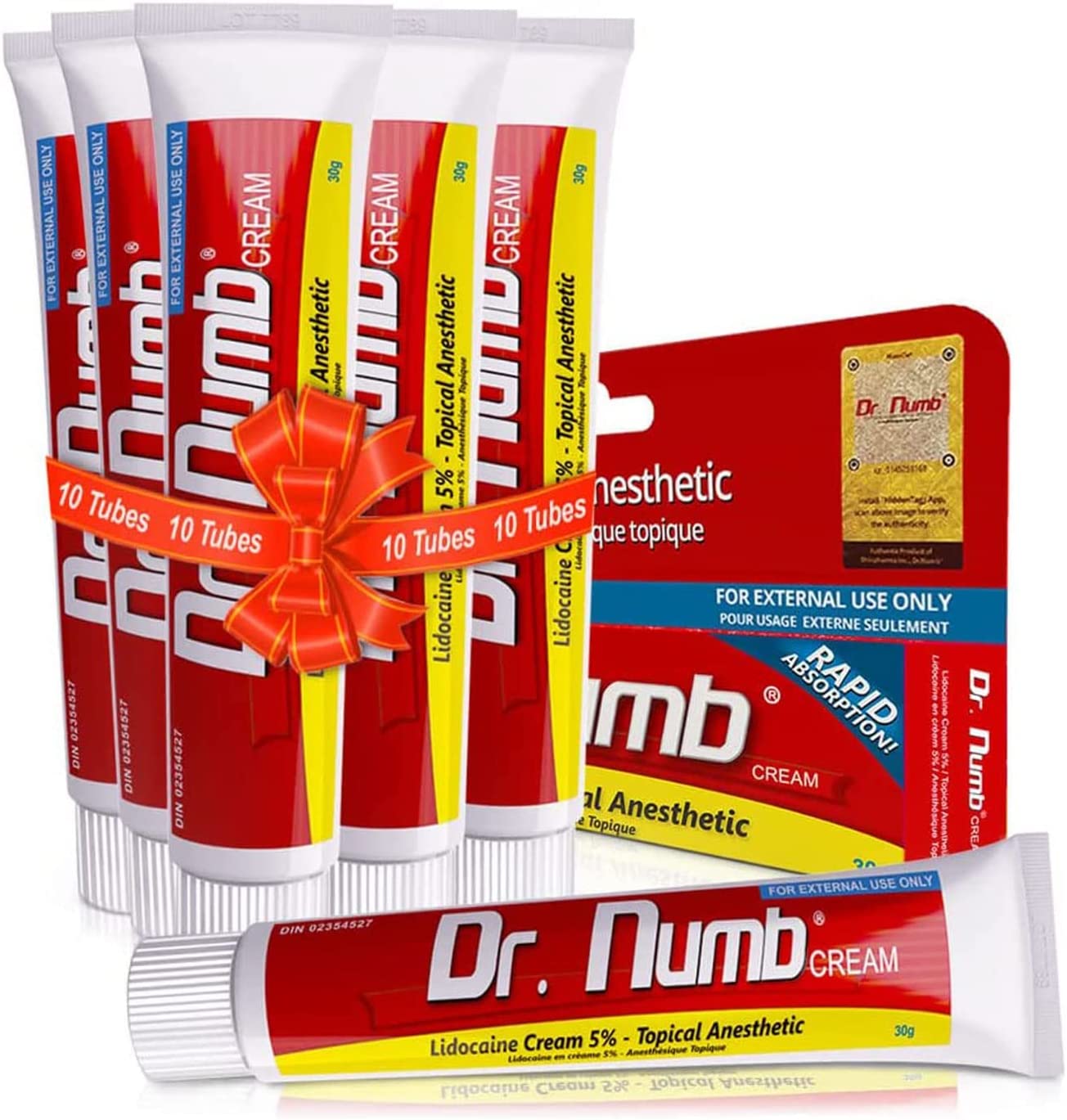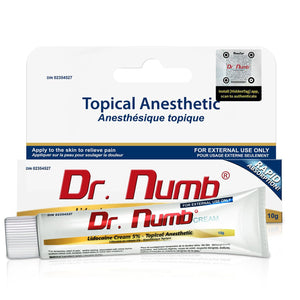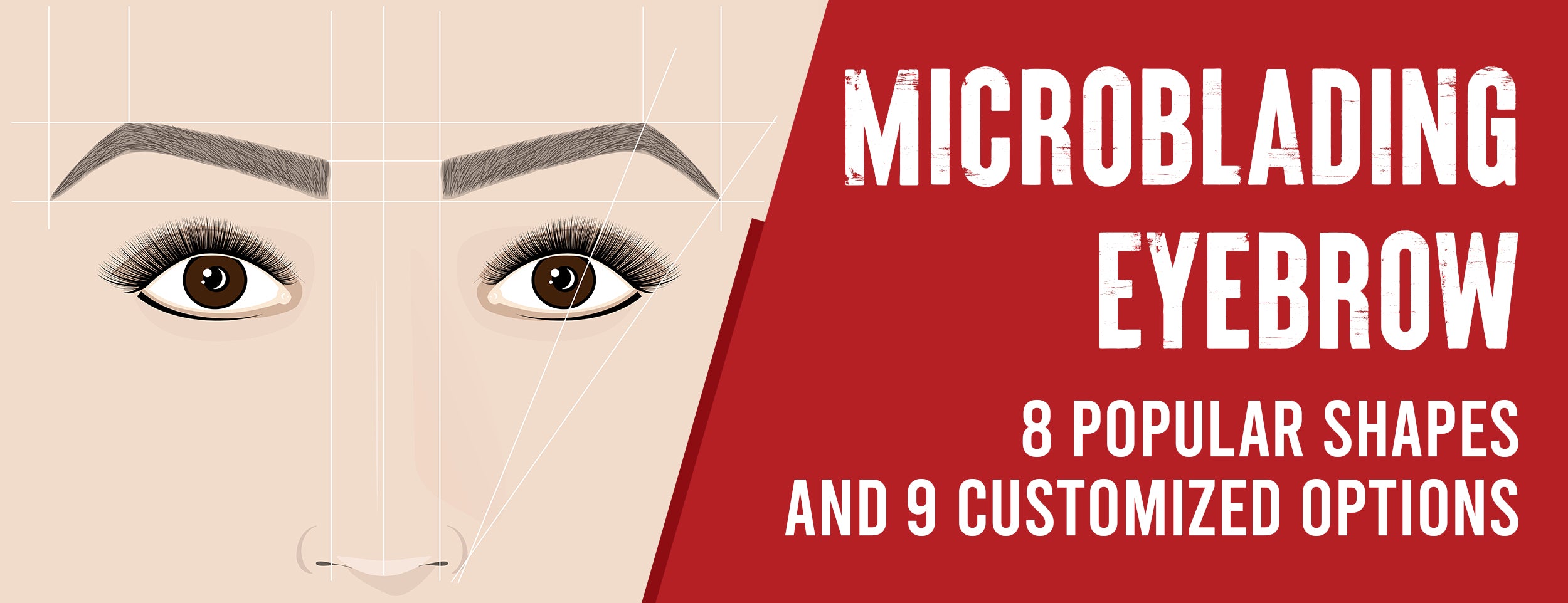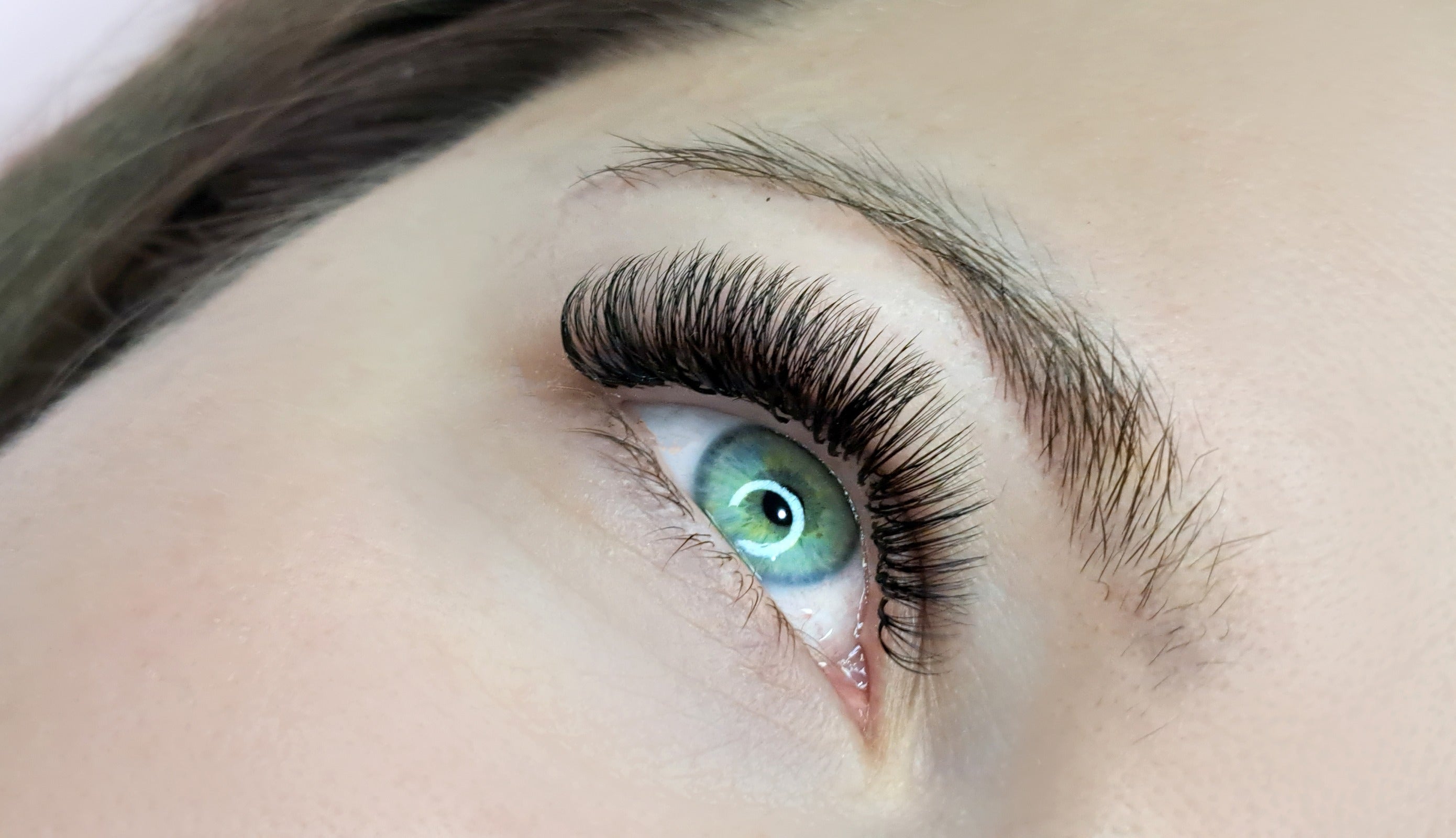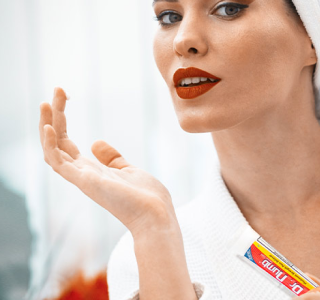Microblading clients often express concerns about the gradual fading of their eyebrows. Why does this happen? How can you prevent or slow down the fading process? And what options do you have if you're unhappy with your faded microbladed eyebrows?
Typically, microblading lasts anywhere from 1 to 3 years, contingent upon factors such as skin type and aftercare. If desired, laser removal or color correction techniques can be employed to remove or correct the microblading. To safeguard your skin, it's crucial to choose an experienced professional.
In this article, we'll delve into the reasons behind fading and provide effective tips and solutions to manage and reverse the fade effectively.
Microbladed Eyebrow Fading: Preventing & Reversing

If fading occurs, there are options for reversing it, including touch-ups or color boosts, but removal should only be considered as a last resort. Let's dive into the details.
Microbladed Eyebrow Fading: How to Prevent or Slow it Down?
While some fading is inevitable with microblading, you can take some steps to prolong and preserve your results as much as possible. Below are some steps to take:
- Follow proper aftercare instructions: Follow your microblade's instructions for proper healing and to prevent premature fading. This includes cleaning, moisturizing, and protecting your brows while avoiding any activities or products that could damage them during the healing period.
- Get regular touch-ups: Regular touch-ups for microbladed eyebrows help maintain and refresh their appearance. Touch-ups are recommended every 6-12 months to correct flaws, fill gaps, and adjust faded or changed colors.
- Use sunscreen: Protect your brows from sun damage daily with at least SPF 30. Reapply every two hours, especially on sunny days or if you sweat or swim.
- Use gentle skincare products: Protect your brows from fading by using gentle skincare products. Avoid harsh chemicals, acids, retinoids, alcohol, and fragrance. Opt for moisturizing and soothing options like aloe vera gel, coconut oil, or shea butter. Keep your brows happy and beautiful.
- Avoid excessive water exposure: To protect your brows from fading or infection, avoid excessive water exposure. After each session, refrain from getting your brows wet for at least 10 days. Limit contact with water afterward, including swimming pools, saunas, hot showers, and activities that induce excessive sweating.
Fading Microbladed Eyebrows: How to Reverse It
There are ways to reverse the fading of microbladed eyebrows, but the extent and cause of the fading and desired outcome will determine the options available. Some of the options to reverse fading are:
- Get a touch-up: Touch-ups can restore color, correct flaws, and refresh your brows. Choose a reputable and experienced professional when choosing a microblade.
- Get a color boost: A color boost for microbladed eyebrows is a technique that adds more pigment to existing strokes, boosting vibrancy and adjusting faded or changed colors. It can be done by the same or a different microblade to achieve desired shades or tones.
- Get a removal: A removal is not recommended for reversing fading and removing microbladed eyebrows. It involves using special solutions or lasers to break down and remove the pigment, which can lead to scarring or damage to your natural brows. It is only recommended as a last resort by a qualified professional.
Eyebrow Microblading: The Faded Process

Despite knowing how to prevent and reverse Microbladed Eyebrow Fading, it is important to understand the fading process. A microblade does not penetrate the deeper layers of the skin like a tattoo. As a semi-permanent brow, the pigment is designed to blend with your existing hair and match the color of your natural eyebrows with tiny needles.
Microblading is not a one-time procedure. The first session is an initial application, where the microblade shapes the brows and fills in pigment. In the second session, the pigment is corrected, gaps are filled in, and the color and intensity of the pigment are adjusted. A touch-up usually takes place four to six weeks after the first session.
After each session, your brows will go through a healing process that lasts about four weeks. During this time, you may notice some changes in your brows, such as:
- Darkening: After microblading, your eyebrows will appear darker and more intense for the first few days. This is normal since the pigment is still fresh.
- Flaking: Approximately one week after microblading, your brows will begin to flake. You may see some pigment come off with the flakes, but this does not mean your brows are fading. You should not pick or scratch at the flakes, as they may cause scarring.
- Fading: After two weeks of microblading, your brows gradually fade into a softer, more natural shade. This is the final stage of healing when the pigment has fully sunk into the skin.

Factors Contributing to Fading
The fading process with microblading is inevitable, but some factors can expedite or exacerbate it. These factors can be divided into two categories: environmental and individual.
Microbladed eyebrows can be affected by environmental factors, including:
- Sun exposure: Microblading is vulnerable to sun damage because UV rays can break down pigment molecules, make them fade faster, and change color over time. Wear sunscreen or a hat outside to protect your eyebrows from sun damage, especially during peak hours.
- Skincare products: Some products, especially acid-based ones, retinoids, and alcohol, can interfere with your microbladed eyebrows. These ingredients can exfoliate or dry out your skin, affecting the pigment's retention and stability. You can prevent this by not applying products directly to your brows or using gentle and moisturizing products.
- Water exposure: Microbladed eyebrows can also be affected by water, especially during the healing process. Water can wash away pigment, cause infection and irritation, and dilute the pigment. Stay dry for 10 days after each session. This means avoiding saunas, hot showers, and swimming pools.
Microblading can be affected by individual factors, such as your skin type, how long it lasts, and how sensitive your skin is.
- Skin type: Skin type influences pigment retention and fading speed. Dry skin retains pigment better due to less oil production, while oily skin can push out or dissolve pigment due to increased sebum. Combination skin results vary depending on the areas of oiliness and dryness.
- Metabolism: Metabolism plays a role in the longevity of microbladed eyebrows. Faster metabolism leads to faster pigment fading, while slower metabolism prolongs results.
- Lifestyle: Lifestyle choices can influence microbladed eyebrow longevity. Factors like smoking, alcohol, and certain medications can accelerate fading due to effects on blood circulation and skin healing. Conversely, a healthy diet, hydration, and regular exercise can promote better skin health and elasticity, resulting in slower fading.
The Microblader’s Technique and Pigment Selection

Last but not least, the microblade's technique and pigment choice will influence how well your microbladed eyebrows fade. A microblade's skill and experience can greatly influence the procedure's outcome and how they customize it to suit your needs. In addition to microblade technique and pigment selection, other factors can influence fading:
- Depth of insertion: The depth of pigment insertion in microblading plays a crucial role in the longevity and natural appearance of the result. When inserted in the upper layer of the epidermis, the pigment lasts longer. Inserting it too deep may cause fading or color changes, while a too-shallow insertion may result in a shorter lifespan or a faint, blurry look.
- The angle of insertion: The insertion angle is crucial in microblading to achieve natural-looking strokes. Inserting the tool at a 90-degree angle creates precise and clean strokes, while acute or obtuse angles can result in uneven or thick strokes.
- Pigment quality: Pigment quality matters. It should be pure, stable, and safe for your skin. Look for pigments resistant to fading and color changes. Impurities or additives can cause faster fading and unpredictable color shifts. Choose wisely.
- Pigment color: Choose a brow pigment that matches your natural color and skin tone. Consider your hair, eye color, and undertone for the best match. Adjust the pigment to achieve your desired intensity and shade. Avoid using a pigment that is too light, dark, warm, or cool to prevent unnatural or contrasting results over time.
How to Fade Microbladed Eyebrows at Home: Risks and Precautions

Can you fade microbladed eyebrows at home without spending time or money on professional removal? Discover home remedies, DIY techniques claimed to fade them, and associated risks and precautions. Find out why seeking professional help for faded microbladed eyebrows is important and explore safe and effective solutions available.
Home Remedies and DIY Techniques
Various home remedies and DIY methods are purported to fade microbladed eyebrows. Some of these methods are:
- Salt: Salt is a natural exfoliant that can help fade microbladed eyebrows. To use salt, apply a paste with water to your brows. Gently rub salt in circular motions, leave it on for 15 minutes, then rinse off. Repeat daily for desired results.
- Lemon: Lemon can naturally lighten microbladed eyebrows. Apply fresh lemon juice to your brows, leave it on for 10 minutes, then rinse with cold water. Repeat daily for desired results. Avoid contact with eyes to prevent irritation.
- Baking soda: Baking soda is a natural abrasive for fading microbladed eyebrows. Mix it with water or hydrogen peroxide to create a paste, and apply it with a cotton swab. Leave it on for 20 minutes and rinse off. Repeat daily for desired results, but be cautious to avoid contact with your eyes.
- Oil: Oil like coconut, olive, or castor oil can effectively fade microbladed eyebrows. Massage the oil onto your brows for 30 minutes, then gently wipe it off. Repeat daily for desired results.
Before attempting home-fading techniques for removing microbladed eyebrows, it's important to know the potential risks and limitations. These include infection, irritation, allergic reactions, and ineffectiveness.
To ensure safe and effective fading, consult a professional microblading technician or dermatologist, follow proper aftercare instructions, and avoid anything that may interfere with the fading process.

The Importance of Seeking Professional Help
For faded microbladed eyebrows, home fading techniques may seem appealing, but they are risky and damaging to your skin. Seeking professional help is crucial.
Microblading is safe and effective when performed by a certified technician or dermatologist. Professionals use advanced techniques and high-quality products to ensure safety, effectiveness, and satisfaction.
If dissatisfied with your faded eyebrows, seek professional help rather than resorting to home-fading techniques. Consult your original or reputable microblade near you, or talk to a dermatologist.
How to Fade Old Microblade Eyebrows: Safe & Effective Solutions

Don't worry if your microbladed eyebrows fade over time. Microblading is a semi-permanent procedure. If you are unsatisfied with the results, you can fade or remove them. Learn how to fade old microbladed eyebrows and how to enhance your eyebrows with effective solutions.
Professional Microblading Touch-ups
Microblading touch-ups are a great way to revive your faded eyebrows. To refresh and revive your microbladed eyebrows, a touch-up involves adding pigment to existing strokes or creating new ones. You can restore the color and intensity of your brows with a touch-up. You can also adjust any colors that have faded or changed over time with a touch-up.
Based on how fast your brows fade and how satisfied you are with them, a touch-up is recommended every 6 to 12 months. A touch-up may not be enough if you have microbladed eyebrows for over two years since the pigment may have faded or become too unstable. In a full microblading session, old pigment is removed, and new strokes are created.
If unsatisfied, you can request a touch-up from the same microblade as your initial procedure or from another one. When choosing a microblade, research and ensure he or she is experienced and reputable. The microblade will also provide aftercare instructions, so avoid any products or activities that might harm your brows or interfere with pigment retention.
Alternative Solutions for Faded Eyebrows
For faded eyebrows, there are some alternative solutions that you can consider if you want to avoid getting a professional touch-up. Some of these solutions include:
- Tinting: Eyebrow tinting is a semi-permanent dye procedure to darken or enhance the color of your eyebrows. It helps define and make faded brows more visible, matching them to your hair color. Tinting can last 4-6 weeks and can be done professionally or at home with a DIY kit.
- Henna: Henna, derived from the Lawsonia inermis plant, is a natural dye used to color eyebrows in shades of brown, red, or black. It enhances vibrancy, nourishes, and conditions brow hairs, lasting two to four weeks. Professional or at-home DIY kits are available.
Before considering alternative solutions like tinting or henna for your eyebrows, it is essential to understand their risks and limitations. Allergic reactions, irritation, and ineffectiveness are some of the risks associated with these methods.
Consulting a professional and doing a patch test is recommended. Additionally, understanding why microbladed eyebrows may fade red over time and how to prevent or manage it can help.
The Phenomenon of Red Fading

Microblading pigments can fade reddish or orange over time, causing eyebrows to appear reddish or orange. Although red fading can affect anyone, it is more visible in people with lighter or cooler complexions.
Two main causes of red fading are allergic reactions and pigment oxidation.
Allergic reactions: Allergies can cause red fading in microbladed eyebrows. Being sensitive to the ingredients or products used may lead to inflammation, swelling, itching, or hives, altering the pigment color. Allergic reactions can also impact healing and retention, causing faster or uneven fading.
Pigment oxidation: Pigment oxidation, a chemical process triggered by oxygen, light, heat, or environmental factors, could lead to red fading. It breaks down pigment molecules, causing the loss of their original color. Factors like skin type, metabolism, and blood circulation can also impact pigment oxidation.
Pigment oxidation impacts colors differently, depending on composition and quality. Darker and cooler colors tend to fade faster, revealing underlying yellow or red pigments, resulting in a reddish or orange hue on eyebrows.
How to Prevent and Manage Red Fading?
While red fading is inevitable and expected with microblading, there are some steps you can take to prevent or slow down the process and manage it if it happens. Some of these steps are:
- Choose a reputable and experienced microblade: Choosing a reputable and experienced microblade is crucial to avoid red fading. They use safe pigments, select the right color for your skin tone, and apply the procedure with skill and precision for the best outcome.
- Follow proper aftercare instructions: Proper aftercare prevents red fading after microblading. Follow your microblade's advice on cleansing, moisturizing, and protecting. Avoid activities and products that could harm your brows and affect pigment healing and retention.
- Use sunscreen: Using sunscreen is crucial to prevent or slow down red fading caused by sun exposure. Applying sunscreen with at least SPF 30 daily, especially on sunny days, and reapplying every two hours or as needed helps protect brows from damage.
- Use gentle skincare products: To slow down red fading in your brows, avoid using skincare products containing acids, retinoids, alcohol, or fragrance. These dry out your skin, which affects pigment retention. Opt for moisturizing and soothing products like coconut oil and aloe vera gel.
If you already have red faded eyebrows, please correct or adjust them to suit your preference. Two main options for correcting or adjusting faded red eyebrows are a touch-up or a color boost.
- Getting a touch-up: Using a reputable microblade to achieve quality results will allow users to fill gaps, correct flaws, and adjust faded colors.
- Getting a color boost: The color boost can rejuvenate fading red eyebrows. It enhances vibrancy and corrects faded or changed colors, such as red or gray, over time. For a different shade or tone, use a different microblade.
Red fading is a common phenomenon with microblading, but it does not have to ruin your look or confidence. Following the tips and solutions discussed in this section, you can prevent or manage red fading and enjoy your microbladed eyebrows for longer.
How to Make Microbladed Eyebrows Fade Faster: Is It Safe?

This section explores why someone might want their microbladed eyebrows to fade faster and the potential risks involved. It also offers safe and non-invasive methods to promote fading. Stay informed before making any decisions about your skin and brows.
Accelerating Fade and its Implications
When someone is unsatisfied with their microbladed eyebrows or wants to try a different color or style, they can fade them faster, so they can remove them completely.
Making microbladed eyebrows fade faster is not as easy or harmless as it may seem. There are several risks and consequences associated with accelerating the fading process, such as:
- Damage to the skin: Accelerating the fading process of pigmentation on the skin can involve harsh methods like chemicals, acids, lasers, or physical exfoliation. However, these methods can cause skin damage, irritation, infection, scarring, or discoloration. It's important to note that these methods can also impact the healing and retention of microbladed eyebrows.
- Damage to the brows: Accelerating the fading process of microbladed eyebrows can damage your natural brows. Methods used to fade microbladed eyebrows may cause hair loss or thinning, weakens the hair follicles, and impacts hair growth, quality, color, shape, and symmetry of the brows.
- Unpredictable results: Acceler, which fades microbladed eyebrows, may yield unpredictable and varied results. Certain methods may not effectively remove all pigment, leading to uneven patches or traces. Additionally, color changes like redness or grayness may occur.
Consider the implications before attempting to speed up fading of microbladed eyebrows. Consult a professional for advice on the best course of action.

Safe Methods to Encourage Fade
You have some options if you still wish to make your microbladed eyebrows fade faster. Instead of harsh or abrasive methods that can damage your skin or eyebrows, they involve natural fading agents and gentle exfoliation techniques that speed up the natural fading process. Some of these ways are:
- Vitamin C: Vitamin C, a natural antioxidant, can help brighten the skin and fade microbladed eyebrows. A daily vitamin C serum or cream can break down pigment molecules and reduce color. Oral vitamin C supplements also support the immune system and skin health.
- Aloe vera: Aloe vera is a versatile natural ingredient moisturizing and healing skin. It can also help fade microbladed eyebrows when applied topically. To use aloe vera, apply pure gel to your brows daily. Additionally, consuming aloe vera juice can hydrate and detoxify the body.
- Coconut oil: Coconut oil is a natural moisturizer for your skin and brows. Microbladed eyebrows may also fade over time. To fade microbladed eyebrows, massage organic virgin coconut oil into your brows daily. Additionally, consuming coconut oil orally can improve metabolism and skin health.
- Sugar scrub: Sugar scrub is a natural exfoliant that aids in removing dead skin cells and pigment from the skin's surface. Exposing new skin layers with less pigment assists in the natural fading process. To fade microbladed eyebrows, gently apply a sugar, honey, or oil paste once or twice a week. Take care not to over-exfoliate or irritate the skin.
Safely fading microbladed eyebrows require patience and consistency. While there are non-invasive methods to help with fading, they may not be as effective as professional removal methods. It's important to consider the potential risks and consult a professional if needed.
Fading eyebrows can also be an attractive feature. Hair dye should not be used on faded or bad microbladed eyebrows since it can cause harm. Safer alternatives will be discussed.
Conclusion
Microblading is not a permanent solution. Your brows will fade over time due to various factors. Fading is normal and inevitable but can be managed and reversed with proper care and professional help.
We have explored the causes and effects of fading, how to fade or prevent fading at home or with professional help, and some common myths and misconceptions about microblading. We hope this article has helped you understand more about microblading and how to care for your brows.



